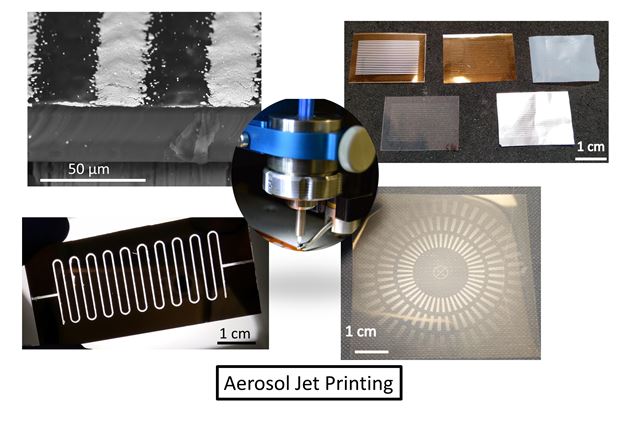Triboelectric motion sensors, based on the generation of a voltage across two dissimilar materials sliding across each other as a result of the triboelectric effect, have generated interest due to the relative simplicity of the typical grated device structures and materials required. However, these sensors are often limited by poor spatial and/or temporal resolution of motion due to limitations in achieving the required device feature sizes through conventional lithography or printing techniques. Here, an aerosol-jet printing (AJP) technique is used to develop triboelectric sensors using a wide variety of materials, including polymers, which can be directly printed into finely featured grated structures for enhanced sensitivity to displacement and speed of motion. A detailed investigation is presented highlighting the role of material selection and feature size in determining the overall resolution of the resulting motion sensor. Our work highlights the ability of AJP to achieve high resolution, fast prototyping speed, wide material adaptation, and large area fabrication, required for wide-ranging triboelectric sensor applications.
Figure: Aerosol-jet printing is used to develop triboelectric motion sensors, based on the generation of a voltage across two dissimilar materials sliding across each other as a result of the triboelectric effect. A wide variety of materials, including polymers, can be directly printed into fine-featured grated structures for enhanced sensitivity to displacement and speed of motion.
Q. Jing, Y. S. Choi, M. Smith, N. Ćatić, C. Ou and S. Kar‑Narayan, "Aerosol-Jet Printed Fine-Featured Triboelectric Sensors for Motion Sensing", Advanced Materials Technologies (2018)

